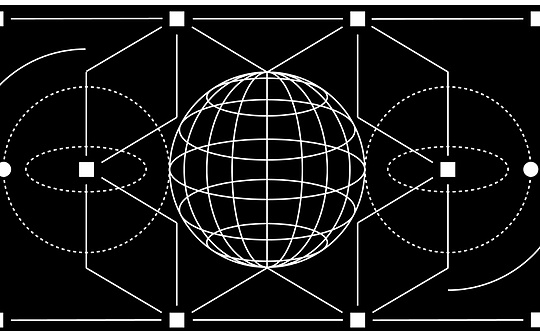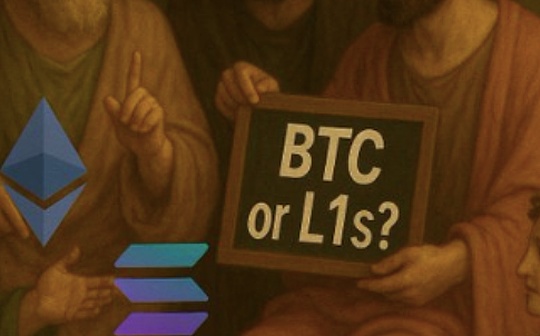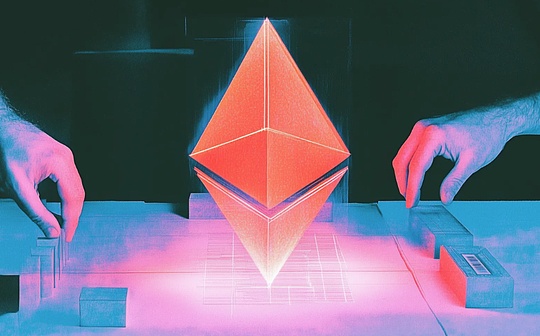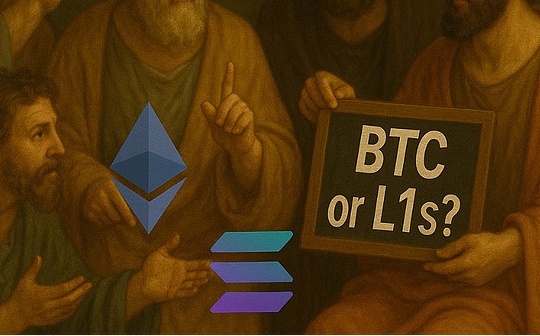
Author: XPara, Researcher Four Pillars; Translation: Bit Chain Vision Xiaozou
1, Proof system andOptimisticprove
Let us return to the foundation of the blockchain.The blockchain is essentially a state machine. The state will change with the change of the transaction, and the shared state after the change will be used by all participants.It is critical to ensure that all participants reach a consensus on sharing status.In order to better reach a consensus and eliminate the trust needs for a certain party, the blockchain focuses on decentralization.However, this decentralization may restrict scalability and make it difficult for it to accommodate more transactions.These problems constitute the three difficulties of the blockchain.
Ethereum, as one of the earliest smart contract blockchains, led the creation of Rollup.In the Rollup mode, it is separated from Ethereum, but there is still a system that checks the effectiveness and punish malware.There are two methods for establishing this system.The first is the Optimistic method. Under this method, the next state is pre -confirmed, and it is finally determined after a buffer challenge period.The second method is to prove the effectiveness of ZK. Under this method, the status update can be verified through a chain in a low -cost verification process.Although the side chain is another choice, I excludes it, because the side chain is very low -dependent on the settlement of Ethereum.
Due to the simple implementation process, the Optimistic certificate (also known as fraud certificate or error certificate) is the main feasible method for settlement ROLLUP state updates.
>
1.1Prove the status of the system:ZkandOP
At one time, the ZK certification system will quickly occupy the dominant position, and the Optimistic proof system will lose its advantage.People usually look forward to the ZK prove that the system can provide ROLLUP with lower cost and faster final certainty. It has made significant progress in proven generation. It has made each of the MIPS, RISC-V, and WASM.Planting experiments.These projects include ZKM, Risczero, Succint Labs and Fluent.Although ZK Rollup has obvious benefits, the challenge of developing a safety version with cost -effectiveness is huge.The update of virtual machines such as EVM also has challenges, because it is difficult to merge new features without damaging any characteristics.
Due to these challenges, the most common in the Rollup ecosystem is the OPTIMISTIC certification system, which accounts for most TVL (about 75%of the total TVL of L2).It is not certain whether this dominant position will continue in the future.However, many measures to optimize the proof of the system have made great progress.
>
1.2 OptimisticWhat will be the future of the system?
Many positive research and development are in progress. The goal is to improve the Optimistic certification system, which mainly focuses on the following three aspects:
· Reduce costs
· Decentralized sorting, challenge and final determination process
· Reduce Soft Finality and Hard Finality (hard end)
These three fields have shown major efforts. For example, the recent DENCUN upgrade, which contains EIP-4844, improves data compression and the development of interactive proof systems.
Before further research, it is necessary to thoroughly understand the established concepts and current situations.First of all, we should look at the development and evolution of this field, and then study the status quo of the Optimistic proof of the project.
2As well asOptimisticProve the history of the development of the system
Optimistic proves that the system is not achieved overnight.Many researchers and developers have worked hard to build a robot proof system to ensure that they can operate seamlessly in actual operations. At present, the system has guaranteed $ 18 billion in capital security.Let’s review the milestone.
2.1past————Trace history
Optimistic Rollup was originally an expansion solution of the Layer 2 extension of Ethereum in 2019 by Ethereum researcher John Adler in 2019.The core concept of Optimistic Rollup is to transfer computing and data storage from the Ethereum main network to the independent L2 chain, and at the same time inherits the security guarantee of Ethereum.The main motivation for developing Optimistic Rollup is to consider the problem of congestion and high transaction fees on the main network of Ethereum.With the increasing popularity of the DEFI protocol and NFT, Ethereum is facing the problem of expansion, which hinders user experience and economic efficiency.
Optimistic Rolllp is mainly experimented and developed by two teams of Arbitrum and Optimism.These Rollup aims to provide compressed transaction data and output roots on the Ethereum main network by processing the transaction under the chain to provide scalability for Ethereum.Because they reduced costs for users and DAPP, the Ethereum community quickly adopted these Rollup.
>
The key feature of Optimistic Rollup is that they use the “Optimistic” method -after a simple effective inspection of the transaction, they assume that all transactions are default and effective, and they rely on the fraudulent proof mechanism. Challengers can set up the set time period(Usually 7 days) The effectiveness of challenging transactions within.If fraud transactions are detected, the fraud proof is re -handled the transaction in the correct way.This optimistic method allows Optimistic Rollup to achieve significant scalability improvements on Ethereum main network.
There have been many challenges in the past.Initially, projects like Optimism used the EVM (called OVM) they modified by themselves, which limited its compatibility with EVM.These projects will continue to use concentrated methods to solve the rollback and challenge mechanism.This method brings a security balance, because the transaction is not an immediate end. If the limited number of participants detect fraud during the challenge window, the transaction can be rolled back.
2.2status quo————Continuous progress, but also facing challenges
The latest development of the Optimistic proof system has significantly improved the efficiency and scalability of the Ethereum L2 solution (such as Arbitrum and Optimism).In addition to the DENCUN upgrade of Ethereum, other optimization of Optimistic Rollup also helps improve efficiency.For example, Arbitrum has been committed to improving its error certification system to ensure the integrity and security of data.
Optimism has also made substantial progress through its SuperChain strategy. The strategy aims to use OP Stack to create a coordinated ecosystem composed of multiple L2.Superchain uses custom and Alt DA solutions, cross -chain message transmission and sharing sorting to promote seamless interoperability and scalability optimization.
Recently, the enhancement of the Optimistic Rollup ecosystem has shown the transformation from non -interactive fraud certification to interactive fraud certification.Interactive proofs include a round -trip dialogue to effectively identify and correct wrong transactions.This change aims to reduce the calculation cost and complexity of the verification on the chain.
3, The current pattern
>
Let’s take a look at the current state of Rollup, focusing on projects and development of projects running under the Optimistic proof system.
At present, Arbitrum and Optimism are mainly committed to improving the Optimistic certification system.Other projects, such as Initia, Dymension, and Rollkit, are developing their own Rollup ecosystem frameworks.
Arbitrum and Optimism are trying to improve the technology of fraudulent proof, and other projects are also achieving interesting methods.Let’s briefly outline their current activities and progress.
3.1 Arbitrum————Multiple round certificationBold
3.1.1 Multi-Round Proof (multiple rounds of proof)
Arbitrum’s proof system uses the “multi -round fraud certificate” method to verify the transaction.This process mainly occurs under the chain, and the final state is recorded on the blockchain of Ethereum to improve transparency.
The core feature of the system is “Assertion Tree”.Use ETH to publish BOND verifications to make a statement (or “assertion”) of Arbitrum.These assertions form a chain, and each assertion is based on the last assertion.However, when a contradictory assertion occurs, the assertion tree will split the branch, which indicates that there may be fraud.
Solving these disputes involves an interactive proof technology called “Dissection”.The verifications involved in the dispute systematically narrowed their differences until there was only one operation left.The operation then runs on the Ethereum L1 to determine its effectiveness.
The specific steps are as follows:
· Two verifications are different from Arbitrum’s state.
· They gradually reduced their disputes to only one calculation step.
· Then run this step on Ethereum L1 to verify which verification of which verification is correct.
Arbitrum’s method is known for its efficiency.Through the calculation of disputed and inspection, it avoids the higher cost process brought by the entire transaction on Ethereum. Just as the Optimism’s single -wheeled fraud certificate is done, because the single round of fraud proof needs to be in L1All calculations are calculated on the chain.
3.1.2 Arbitrum Bold
>
BOLD (delay in boundary liquidity) is a new controversial solution tailored for the Optimistic ROOLUP on the Arbitrum chain, which aims to promote verification without permission.This mechanism is solved by ensuring the dispute at the scheduled time window, thereby reducing the delayed attack -related risks.
BOLD has several key features and is an important part of its functions.First of all, it introduces verification without permission, allowing any honest party to verify and binds their funds to publish the correct L2 state assertion.This feature enables honest authenticists to challenge and win controversy with malicious participants.Secondly, BOLD guarantees that the dispute will be resolved in a fixed time window. At present, the Arbitrum One and Nova are set to a challenge period (about 6.4 days).In addition, the longest period of time to resolve the dispute will include up to two challenges and the two -day width limit that the Security Council may intervene.Finally, Bold supports Arbitrum into the Stage 2 Rollup stage to ensure that anyone can verify the L2 status and submit fraud to Ethereum, which enhances the decentralized characteristics and security of the platform.
It is very important that Bold advocates participation without permission and encourages any honest party to participate in the verification process.This tolerance aims to cultivate greater elasticity in the network through diversified participation and reduction of center failure points.At present, Bold is in the release stage of Alpha and deployed on the public test network.It has also been audited twice.
3.2 Optimism————Error proofVM,,Cannon
>
The error proof system in OP-Stack aims to challenge and reduce malicious activities in the network.The upcoming error proves that the virtual machine will be a key improvement.The system consists of three main parts: error proves (FPP), error prove virtual machine (FPVM) and controversial game protocols.FPP checks the Rollup status conversion to verify the L2 output (L1 input) and organize the controversy of L1 output.This modular architecture allows independent development and deployment of multiple proof systems and unique controversial games, which greatly enhances the flexibility and security of the system.
FPVM is a minimum and combined unit in this architecture. Due to the separation from FPP, it can execute the instruction cycle used to prove the transaction, and is not affected by the Ethereum protocol update.The controversial game protocols coordinate the challenge mechanism through equivalent state conversion to reduce the dispute to a single instruction verification, which allows effective proofs on L1 EVM.The system promotes a multi -proof of the future, such as ZK certification and aggregation proof system.
3.3 Initia–Enshrined OP-Stack,,Opinit
>
Initia is a COMSOS L1 blockchain, which is building a unified, intertwined Rollup ecosystem.Initia is very similar to the Rollup ecosystem in Ethereum, but it is designed for Rollup from bottom to top.The authentication of the INITIA L1 runs a sorter at Rollup, and the settlement based on Optimistic proof is embedded in the L1 blockchain.Let’s see how these Rollup work. These Rollups are built by Opinit Stack. Opinit Stack supports EVM, WASMVM and Movevm, which has native interoperability implemented through IBC.
Opinit Stack is a framework aimed at starting the MINITIA L2 based on the Initia L1 blockchain.Opinit Stack is specially built by COSMOSSDK. COSMOSSDK can help build Optimistic Rollup that is not related to virtual machines, which is very close to the Bedrolk interface of Optimism.By using the Initia L1 governance model, it effectively handles disputes in fraud to ensure reliable transaction verification and dispute resolution.Just like Bedrol’s challenge system, the permitted challengers can delete unsatisfactory output.In addition, through the L1 proposal, the output submitters can be changed.
Opinit Stack’s two main modes of essentially — ophost and OPCHILD:
The Ophost module is designed for the L1 operation in the Initia ecosystem, using the COSMOS SDK function.It includes various message types and RPC Handler methods to promote core activities such as batch submission, bridge creation, output data proposal and output deletion.
· Opchild module focuses on L2 operations, providing mechanisms that support token transfer and cost pool management.It also includes specific message types and RPC Handler, which is used to execute messages, determine tokens storage, and start tokens from L2 to L1 to ensure that the improved L2 function is achieved in the Initia architecture.
3.4 Taiko————Multi -round system
>
TAIKO is a default Optimistic Rollup, using a multi -certification system.The system combines the Optimistic method and the use of ZK certification.
This process starts with Proposer. They build Rollup blocks from L2 transactions and recommend them to the L1 TAIKO contract on Ethereum.These proposed blocks are added to the L1 contract without any validity proof.Then, Prover has the opportunity to challenge the effectiveness of the proposed block by providing Bond, which requires pledged TAIKO tokens.If a block is not challenged during the challenge period, it will be considered valid and is finally determined on L1 and returned to the proofer’s Bond.When the block is challenged, ZK is required to confirm the effectiveness of the block.The correct ProVer, whether it is the initial ProVer or the challenger, will get rewards in addition to getting back the Bond.At the same time, the wrong side of the other party will be punished, and part of them will be burned by Burn.
Interestingly, TAIKO is estimated to have about 1%of blocks to prove ZK, which helps reduce calculation overhead and still provide valid guarantee.In order to enhance its elasticity, TAIKO supports multiple proofs such as Plonk, Halo2 and SGX to prevent potential bugs or vulnerabilities.This method allows DAPP to set its own trust assumptions and security levels, showing TAIKO’s contribution to the scalability and security of the blockchain.
3.5other–DymensionandRollkit
3.5.1 Dymension
Crack proves is an integral part of the Dymension ecosystem, which aims to ensure the integrity of the state conversion of the blockchain.When the ROLLUP sorter in the Rollapp (RolLUP in Dymension L1 publishs a state root, all Rollapp nodes monitor these conversions.If an invalid state conversion is detected, these nodes are generated by collecting the blocks in the block until the fraud state conversion list can be generated to generate the only fraud proof transaction.
This collection transaction includes details such as block height, transaction index, BLOB share, BLOB containing proof and status testimony, and then sent to Dymension for verification.Once submitted, Dymension’s full node will verify the data and re -calculate the status conversion.If the temporary state root (ISR) generated by the calculated conversion is different from the status of the publishing, the fraud proves that it is verified, resulting in the rollback of the dispute state and the penalty of the responsible sorter.
The current DYMENSION main network is set up to approximately 120,000 blocks.Since the current output of one block is currently produced, the final determination is about 8 days.
3.5.2 rollkit
>
Rollkit’s status fraud proves to help reduce trust in the blockchain network by identifying fraud transactions.They are used to do not match the state of the entire node and the sorter.The whole node creates a proof shared on the entire network for verification.If it is confirmed that it is not matched, it is necessary to take correction measures to enhance security and disperse supervision.
4Future development: problems and solutions
Many people once thought that Optimistic Rollup is not as good as ZK Rollup.As ZK Rollup is increasingly put into production, its security interoperability and faster final determination and other advantages are well known that people are not only doubtful, but the Optimistic has proved whether the system will have a sharp decline.I don’t think so, because there have been many positive progress in the main problems in the Optimistic proof system.
Now, let’s take a look at what these main problems are and what potential solutions?
· Operation center
· High operation cost
· Slowly final determination
4.1Decentralization————No license verification
>
In the Optimistic Rollup project, the centralization of the sorter is a key issue because it involves a centralized control point and trust point in a decentralized system.In Optimistic Rollup, the sorter is responsible for sorting the transaction, aggregating the transaction under the chain, and submitting them to Ethereum.This central role gives the sorters a considerable power and control, which may bring some centralized risks.
Most Rollup today uses a centralized sorter.In this case, a sorter is usually run by a single entity or tissue, which may lead to several potential problems.Most current Rollup, including OP-Mainnet and Arbitrum, are not completely decentralized.They depend on certain central entities in submission of trading packages and participating in the fraud challenge system.However, Arbitrum has a built -in way. If the sorter is off or performs malicious behaviors, users can bypass the sorter.
The recent BLAST rollback incident is a good example, which can show the benefits and disadvantages of centralization.This incident highlights that the centralized L2 solution does not have enough user exit strategies, which is very risky.It can be clearly seen when BLAST shuts down and the transaction related to hacking attacks is deleted.The central entity operating ROLLUP can affect the entire ecosystem. In this case, it helps find $ 62.5 million.
4.1.2 Solution 1: No license verification is required
Arbitrum and Optimism are the leading Optimistic Rollup framework builders. They are now considering the next step of decentralization of ROLLUP without licensed verification.They are all preparing to release updates this year, so that the verification process does not need to be permitted.
· Arbitrum: Arbitrum is committed to achieving verifications that do not require licenses through a new verification protocol named BOLD (boundary liquidity delay).The agreement allows any honest party to publish the correct L2 state assertion to participate in the verification process by binding their funds.This eliminates the needs of the central entity management authentication and enables disputes to be solved based on the correctness of the state rather than the verification.
· Optimism: Optimism aims to implement no license verification by converting to a decentralized error verification system.Initially, Optimism relied on the Optimism Security Commission and the Optimism Foundation managed.In order to further decentralize, Optimism introduced Cannon, which is an error proof system under the chain. It is currently deployed on OP SEPOLIA for testing.By using Cannon, Optimism is trying to transition from a system that needs to be clearly licensed to a system that can participate in trading verification and conflict resolution.The system allows anyone to participate in the verification process by submitting a withdrawal statement supported by Bond.
4.1.3 Solution 2: Dentalization of sorters
The concentration characteristics of sorters (responsible for building and proposed blocks) have attracted attention to centralization.In order to cope with these challenges, Rollup aims to transition from a single sorter model to multi -row -of -order settings, so as to assign blocks to verify and propose responsibilities between multiple independent entities.Here are some methods that can achieve decentralization of sorters.
· Sharing sorter: Outsourcing to third -party services, such as Espresso and Radius.
· Distributed sorter technology (DST): Use machine group distribution sorting tasks to provide highly faulty.This can be considered similar to the DVT solution (such as Obol network) built for POS verificationrs.
Different Rollups can have different priority considerations according to their specific cases, such as the maximum decentralized characteristics, flexibility or geographical distribution.For example, universal Rollups like Optimism may adopt a more decentralized method, but using a special sorter set (such as DST), and a specific application Rollup (such as game Rollup) may tend to centralized mode, but use shared sorters to use shared sortersEnsure reliability and reduce the stop time.This area is still in the early stage of development.
>
4.2Lower cost————Data availability and interactive proof system
Optimistic Rollup requires storage transactions to re -build the state of the challenge process.This may lead to high data storage costs, which constitutes most of the operating costs of Optimistic Rollup.However, people are actively studying this problem, including the application of more compression technology or using Alt DA (replaced data usability).In addition, the interactive proof system helps reduce the cost of challenge, because the calculation of challenges is greatly reduced.
4.2.1 Solution 1: Low cost DA
Optimistic Rollup is effectively using Ethereum Blobs and other data usability (DA) solutions (such as Celestia) to solve high -cost problems related to the release of transaction package data.
In the case of Ethereum, Optimistic Rollup previously published transaction data as CALLDATA to the main network, which is a huge cost.However, with the upgrade of Dencun, they now use the new data storage format called Blobs, which reduces the total cost by more than 90%.
>
In addition to using Ethereum’s own progress, Optimistic Rollup is also integrated with other data usability decisions (such as Avail and Celestia).By uninstalling the data of the transaction package to Celestia, Optimistic Rollup can reduce the dependence on spending higher storage on Ethereum, thereby further reducing the cost related to data release.This integration allows Rollup to maintain high -level throughput and transaction speed while maintaining cost -controllable costs.
With the launch of ROLLUP using the Optimistic proof system in more and more, the ALT DA field is now getting more and more attention.With more Rollup preparing for release, the ALT DA field will also significantly strengthen.At present, DA neither constitutes the bottleneck of operating costs nor is it not to expand the bottleneck.
4.2.2 Solution 2: Interactive proof system
In Optimistic Rollup, if a transaction is suspected to be fraudulent, the challenger on the network can challenge the effectiveness of the output root.During the challenge period, fraudulent proof must be provided to prove the correctness of the transaction.If the transaction is proven to be fraudulent, the proof is verified on the chain, which will cause the transaction to be invalid.This method ensures that only controversial transactions need to be verified on the chain, so that most transactions are kept under the chain.
Interactive proof system invites participants to generate and submit fraud certification during suspect that a transaction is a fraud transaction.Manageing Rollup’s smart contracts to evaluate these proof based on the status root submitted by the sorter.If the deviation is found, discard the incorrect state and restore the system to the previous valid state.This method ensures effective verification without bringing unnecessary calculation burden to Ethereum network.At present, this calculation is performed on the chain, which may be very expensive.For Arbitrum, the calculation required for challenge is completed under the chain, and the final result is released on the chain.But the cost may be minimal, because there is almost no challenge in the current Optimistic Rollup.
4.3Slowly final certainty————Fast execution and mixed certification system
Optimistic Rollow has two types of final determinism -soft confirmation and rapid certainty.Soft confirmation refers to the initial state of the sorter execution state, and at the same time, batch transactions are issued on Ethereum.At this time, the transaction is considered “soft and certain”, and users and applications on ROLLUP can rely on this transaction with confidence.However, there is a period of challenge (usually about 7 days), and during this period, anyone can submit a “fraud certificate” to question the effectiveness of the batch of transactions.If the fraudulent certificate is not submitted during the challenge period, the transaction package will achieve hard certainty and cannot be rolled back or challenged.Generally, the native bridge needs to be rigid to transfer assets.
When constructing a bridge or multi -chain DAPP, the slow and soft confirmation of the speed may cause problems.This problem is solving through faster execution and mixed certification systems.
4.3.1 Solution 1: Perform faster execution
In terms of soft determination, this process involves the transformation of execution status and stores the transaction package in Ethereum.Because the EVM specification does not support parallel execution and database optimization, the execution process is limited.However, projects like Megaeth and Heiko are constructing a parallel execution environment and using the Optimistic certification system.
In addition, rollup is trying to store trading packages faster through shorter blocks.For Arbitrum, a block is generated by generating a block every 250 milliseconds, or a block can be generated per 100 milliseconds on the configurable ORBIT chain. Arbitrum ensures fast transaction confirmation.In addition, Arbitrum’s design uses a unique “sorting” model instead of the traditional “block construction” method. This unique sorting model achieves faster processing by eliminating the needs of the memory pool in the memory pool to achieve faster treatment.speed.At the same time, you can also remove bad MEVs.
4.3.2 Solution 2: Mixed proof system
The hybrid certification system, especially those hybrid certification systems that combine ZK certification and Optimistic Rollup, significantly improve the final certainty of blockchain transactions by reducing the time required by conclusions to verify.Optimistic Rollup (such as those used in OP Stack in Optimism) essentially depend on such a hypothesis: unless it is challenged, trading is effective.This makes the dispute or challenge window essential, and can deal with potential invalid transactions.However, this challenge period will lead to delay in transaction determination, because the challenge period must be long enough to ensure reliable verification and support any potential challenges.
ZETH is a ZK block Prover built on RISC Zero ZKVM. It provides encrypted evidence to prove that the transaction block is correct and will not disclose any detail information about the transaction itself, thereby supporting the real -time effectiveness of the transaction.examine.This reduces its dependence on the long -term dispute window required to Optimistic Rollup, and has greatly shortened the final determination time.
Tools such as ZETH ensure that the transaction sorting and data availability mechanism is reliable, and the efficiency of L2 solution (such as OPTIMISM) is improved by reducing the challenge period from a few days to several hours or even minutes.Projects like ZKM have also developed a mixed proof system for Metis.
>
5, Look forward to the future————Optimistic rollupWill it be replaced?
In my opinion, Optimistic Rollup will not be replaced quickly.Many improvements are in progress, and it may be adopted by other ecosystems for simplicity.In future articles, I will try to study the “status of the ZK certification system” in depth, discuss its recent development and the upcoming version, and compare it with Optimistic Rollup.However, the use of frameworks such as Arbitrum Orbit and OP-Stack is accelerating. I hope that each ecosystem has better infrastructure and tools, and they have better coordination.
One problem I saw in the field of ROLLUP is the problem of expansion.L1 projects like SEI, SUI and Solana are developing infrastructure to achieve reliable parallel transaction execution and database optimization, which aims to make blockchain easier to be used by the public.The current ROLLUP may not be able to handle the amount of transaction as much as SUI and achieve fast final certainty.However, as projects like Fuel Network, Megaeth, and Heiko make parallel implementation possible, we can expect performance improvement in the Rollup field soon.







